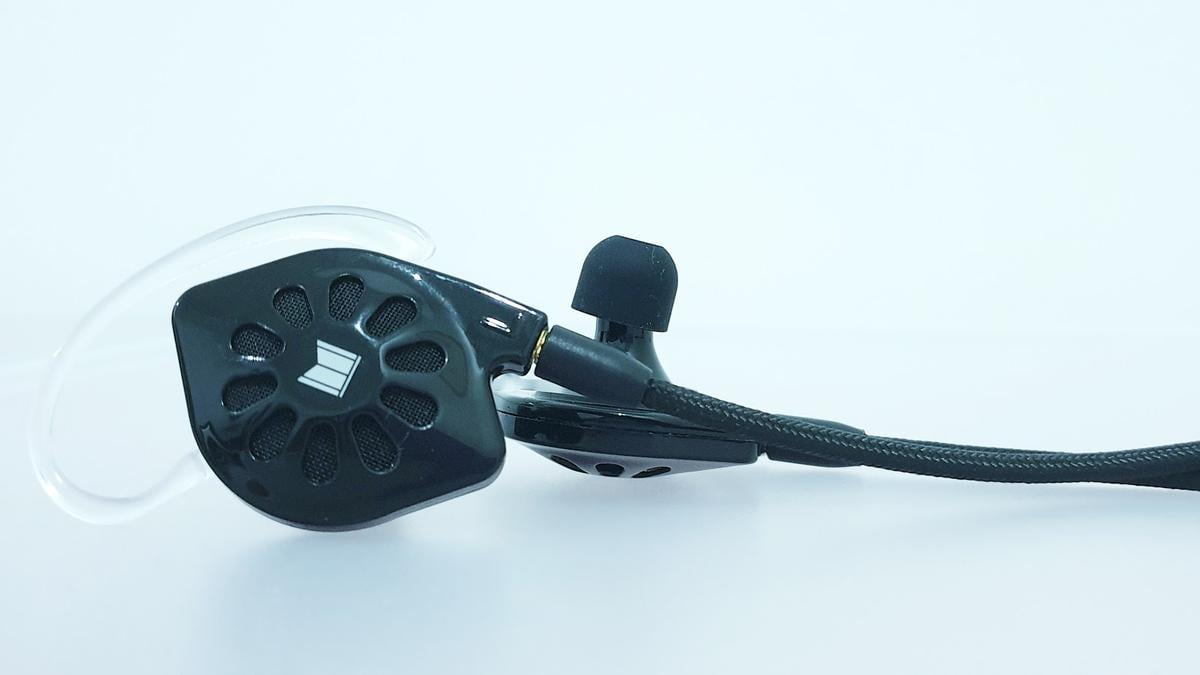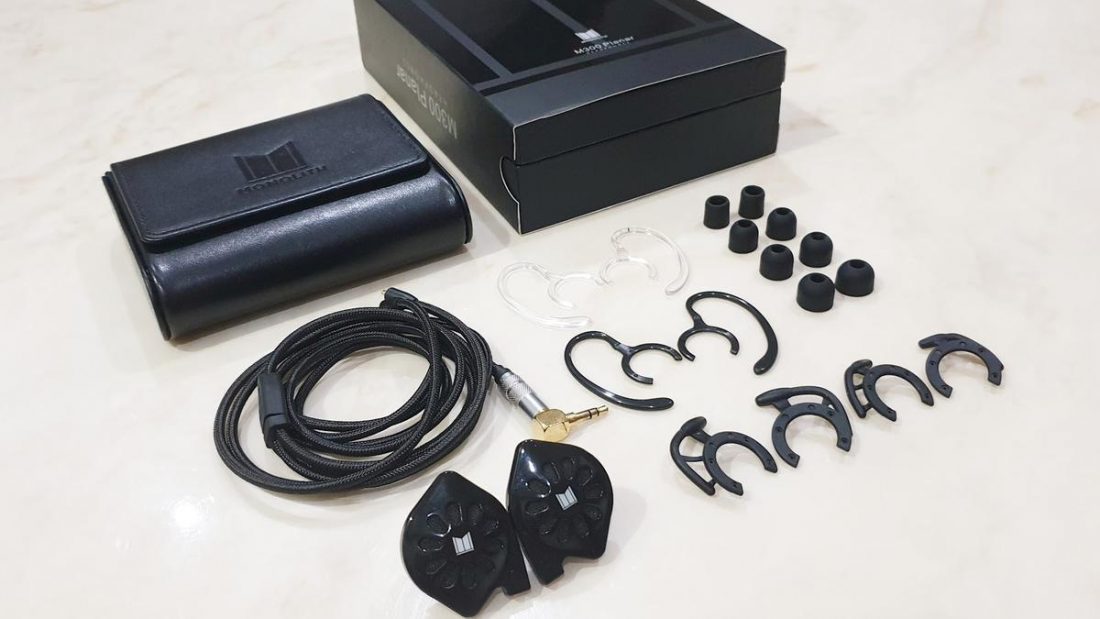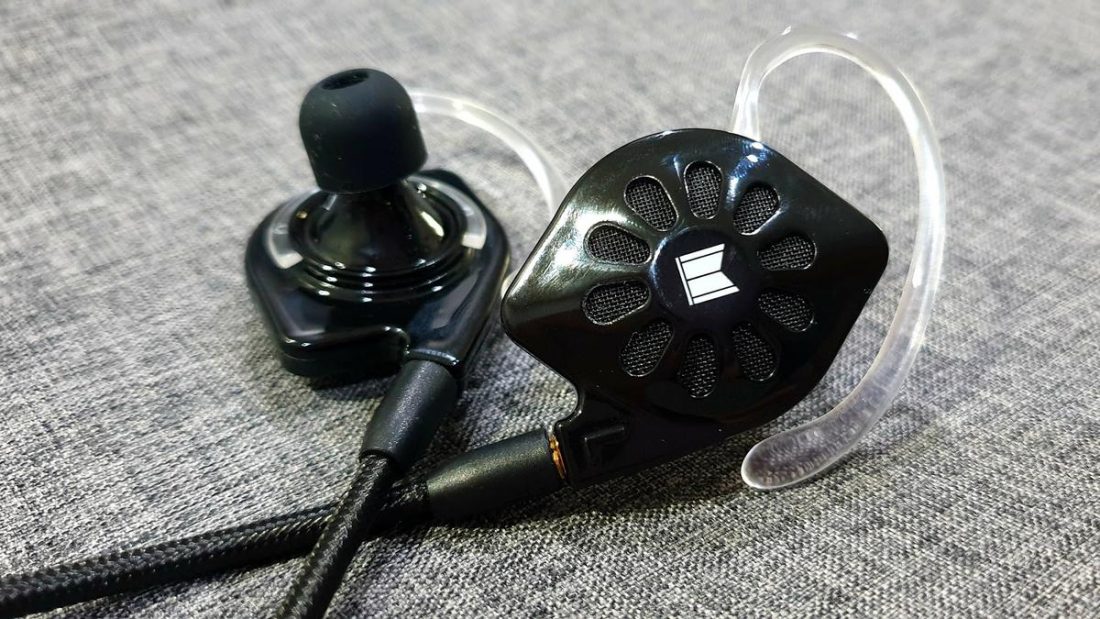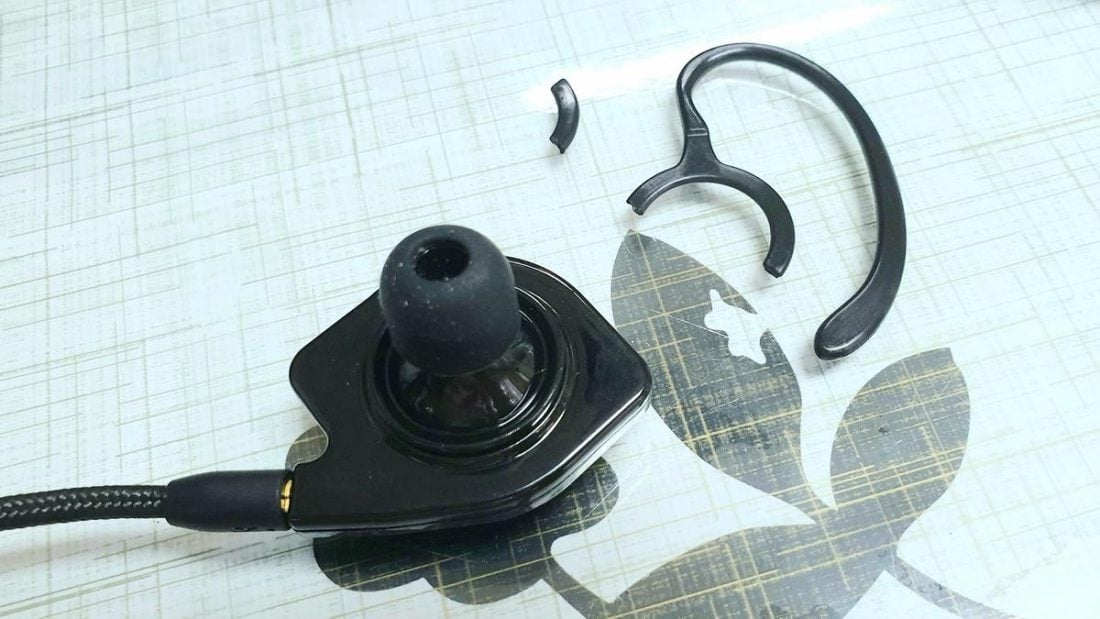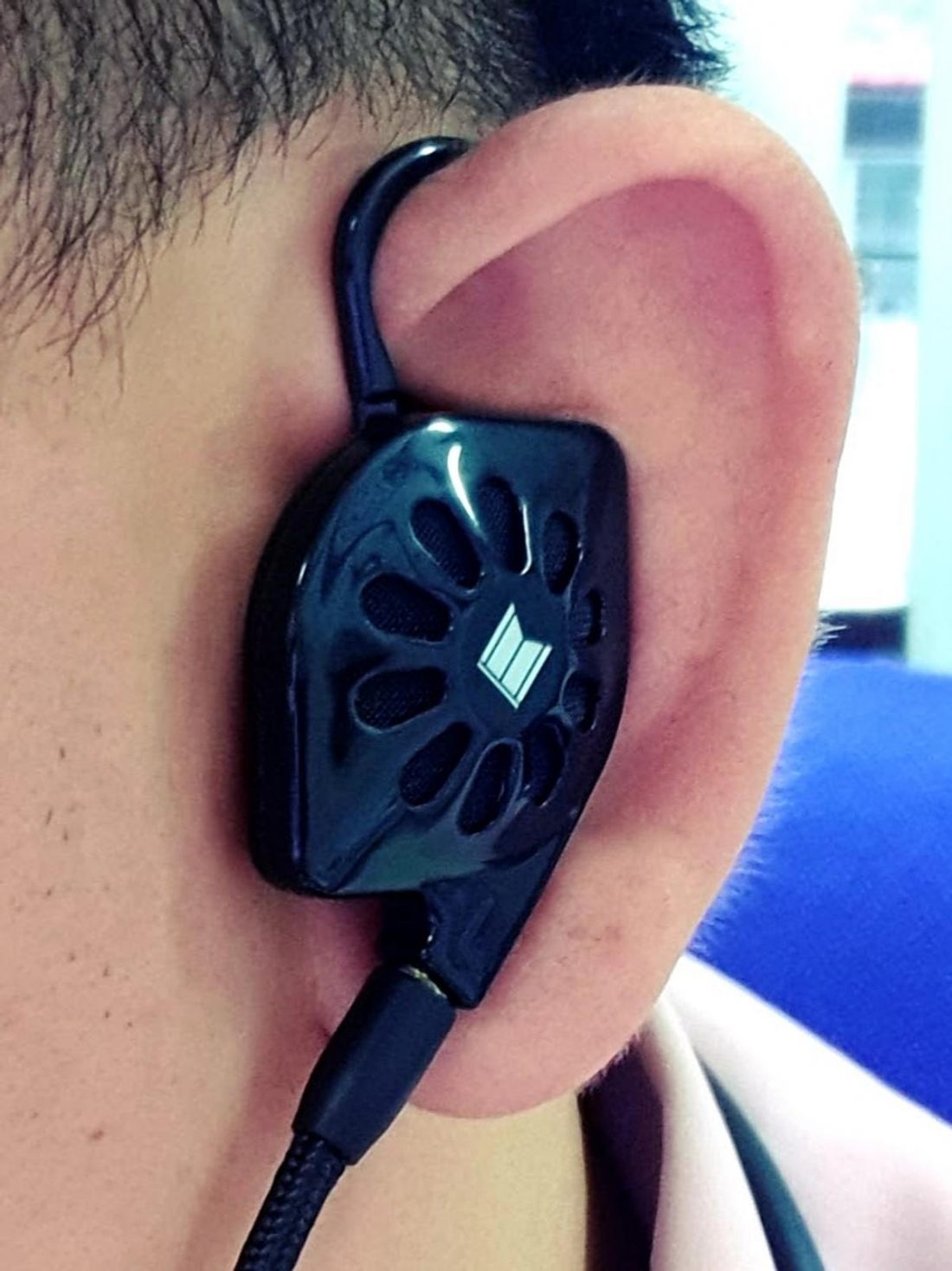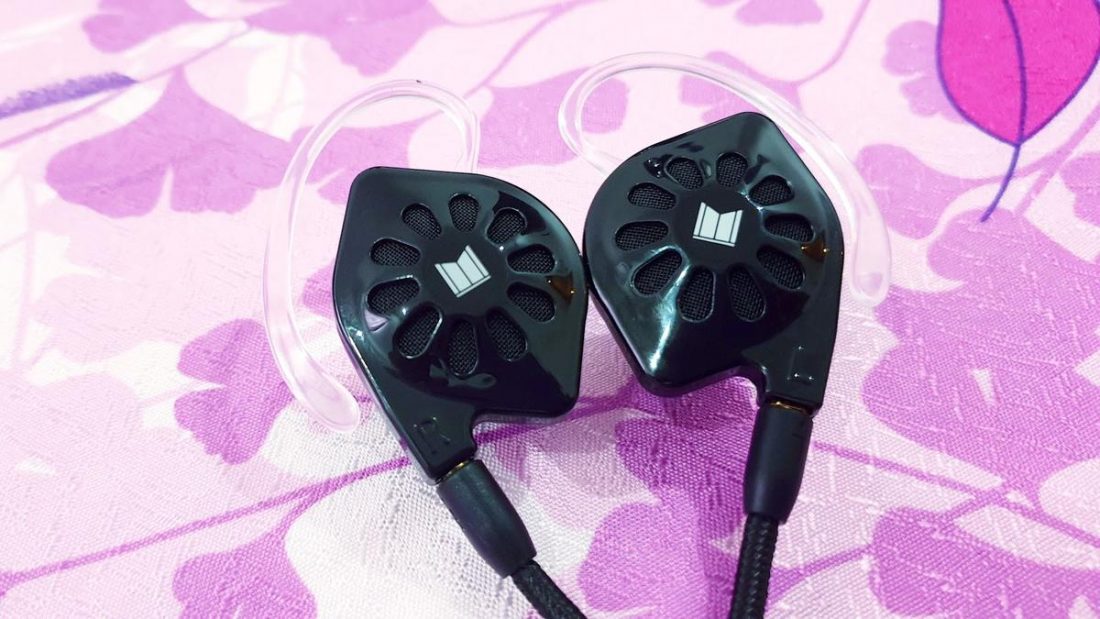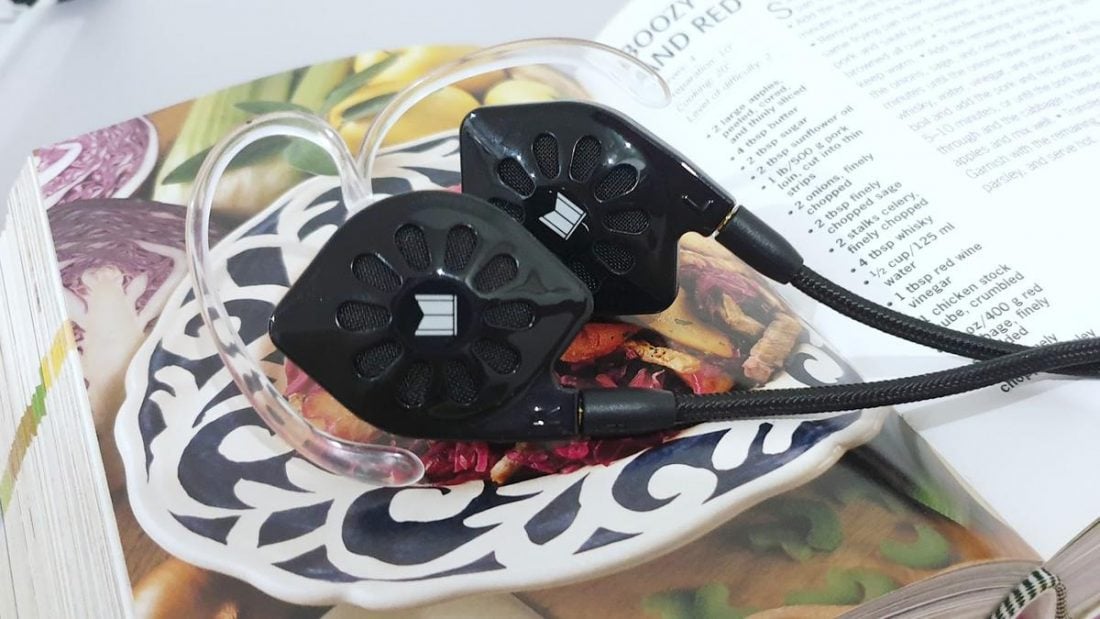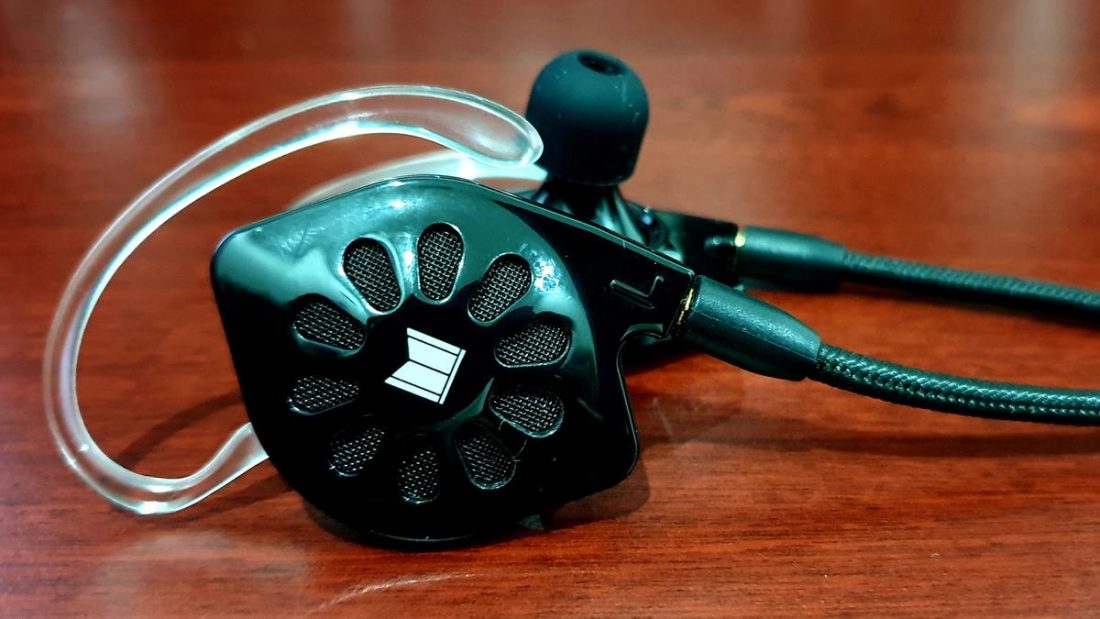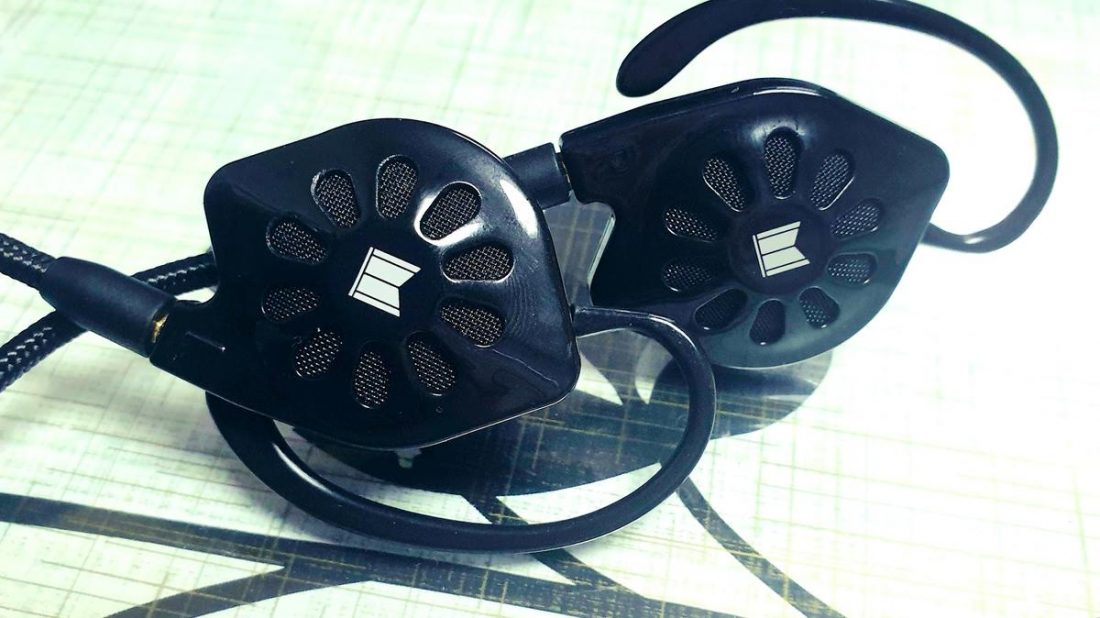Look at Audeze. Endless pursuant of high-end audio and innovators of the planar magnetic driver. Like their namesake, the journey from rags to riches is as epic as an odyssey. Their LCD series of headphones warrant attention and adulation everywhere they go, and just recently they shrunk their planar drivers to make inroads into portable audio. No signs of stopping, then.
Doppelgängers
Today we take a look at a Monolith M300, a product that looks strikingly similar to the Audeze iSine series, but marketed to consumers. The M300 has a 28mm membrane surrounded by magnets, delivering sound purported to be low distortion with accurate imaging. Borrowing another iSine cue, the M300 is also open-back, subverting the in-your-head feel most in-ear monitors (IEMs) bring.
Equipment Used:
DAP IEMs Albums
Technical Specifications
Transducer Type: Planar Magnetic, Semi-Open Magnetic Structure: Toroidal Magnet Type: High-grade N50 Neodymium Diaphragm Type: Uniforce double side voice coil design Transducer Size: 28mm Maximum Power Handling: 3 watts Maximum SPL: >120dB Frequency Response: 18Hz ~ 50kHz Total Harmonic Distortion: Less than 0.1% at 100dB Impedance: 22 ohms Dimensions: 1.3″ x 1.6″ (32 x 40 mm) Weight (per side): 0.48 oz. (13.5g)
Packaging and Accessories
All things considered, it’s a handsome and presentable package for the budget-minded M300. A big, black and bold Monolith logo adorns the cardboard sleeve, almost like it’s wearing a tux. Sliding off the sleeve reveals a black cardboard box. Continuing the formal theme, inside the box are the almond-shaped M300 earpieces and its black-clad accessories. It’s class and elegance all the way.
Suit & Tie
First impressions are very good as far as packaging goes. The accessories are however, rudimental. You get a fabric-sheathed cable, a magnetic faux-leather carry case, 4 pairs of ear tips, 2 pairs of earhooks (in black and clear) and 2 pairs of earlocks (in black). The bare essentials to put on the M300 and get straight to the music. The cable is thick and well-built, but don’t listen to me, I’m a sucker for fabric sheathing. The connectors look solid and so does the 90-degree angled 3.5mm jack, but the cable adds weight to the earpieces and affects the fit. And when I talk about the fit, hoo boy… more on that later.
Design and Build Quality
Being an Audeze-inspired design, I didn’t expect much by way of originality, so it’s hard to be disappointed. But man do they try. The design is a direct lift from the iSine template, a black slate with multiple perforations, a marriage between the serious iSine 10 and the poppy iSine LX. They’re also identical function-wise, from cable placement to how you wear them. Dead ringer alert. The two plastic halves of the earpieces seem to be slapped together just securely enough to hold the driver in place, until they reach the end user. Where the halves meet, the edges aren’t seamless either, especially at the MMCX connectors. A small pry might just open up the earpiece. They behave more like cardboard cutouts than actual IEMs, ugh.
Candle in the Wind
But that’s not all. The earhooks, essential for wearing the M300, are extremely fragile. Like peanut brittle stricken with brittle bone disease, there is intense fear that every move I make might break them. I only had 4 to work with and was extremely careful with handling them. The one time I was careless and yanked the M300 off in a hurry, the earhook broke. I was shattered.
Fit, Isolation, and Comfort
The conundrum is, the supplied earlocks didn’t help with the fit at all, so I was left with only the earhooks. The frail, flimsy hooks will be the deal-breaker for most potential buyers. You have to slide the hooks over your ears while maneuvering the nozzles into the ear canals, all the while remembering that you’re handling something that might break through sheer will alone.
The Misfits
It’s a huge pity, with a king-sized, 50-storey, week-long pity party as well, because when you finally do get the M300 into your ears, they are extremely comfortable. Even with the heavy stock cable I couldn’t feel the pull, they sat securely thanks to the hooks bearing most of the weight. Getting here, though, is so tedious it’s almost ceremonial. I expected applause everytime I managed to put them on. Also, being an open-back design, you don’t have to worry about sound isolation since you aren’t getting any. The open back is a double-edged sword. It helps with the large, out-of-head soundstage, but opens the floodgates to lots of background noise.
Sound Quality
We’ve gone through sight and touch, and the M300 barely made it out alive from those tests. So we’ll skip taste and smell, and go to the main course.
Overall Sound Signature
The M300 tries hard to promote a sedentary lifestyle. It possesses a mellow, laid-back and almost nonchalant signature, being warm to the point of sounding dark. The midbass and lower mids are elevated, and richly so, whereas the upper mids and treble are subdued and faint. Like the Queen song, the M300 is heavy in the bottom end of things. The default sound signature will only accommodate a small subset of music genres, those of the docile, low-tempo kind. Jazz vocals and acoustic guitar-driven music might fare well, as will easy listening. M300’s rounded-off notes and slow transients mean that any genre with a sense of urgency (like EDM or even pop) will fall unflatteringly flat.
Listening Conditions
Critical listening was done after 100 hours of burn-in, giving the planar driver and the surrounding magnets a good, sweaty workout. The sound remained much the same after. The main review rig was Sony’s NW-WM1A Walkman modded by Project K, using the stock cable and stock medium tips. No EQ was applied to better assess the default sound.
Bass
M300’s bass is massive, magnitudinous, and er, monolithic, really. Like swinging a warhammer with reckless abandon, the bass is a showcase of power and dominance, and the epicenter of warmth in the signature. The sub-bass extension is decent enough, and is easily heard and felt, like vibrations across the eardrums and throat.
Hammertime
For the midbass, authority is in full swing. Attacks are solid and heavy, but the punches are ill-defined and don’t decay cleanly. This hampers detail levels and layering, and sometimes the bass resembles a weighty, amorphous blob. The hazy background, lack of dynamics and slight bleed to the mids only make matters worse. The tone is actually quite good, with an organic zing thanks to the smooth, rounded notes. Music sounds pleasing in fact, nothing much wrong at all, but the lack of finesse and technicality clearly unsettles the bass. You feel like there’s a lot of potential here but the bass didn’t show up to perform.
Mids
Like a slippery snake slithering down a slopey slalom, the mids are defined by its fluidity and smoothness. Notes glide and flow along seamlessly with good tonal balance, especially in the lower mids where male vocals and plucked strings reside. They sound full-bodied and assured, and are easily the best performers in the spectrum. The attributes of the planar magnetic driver finally rears its head too. Transient response is good, breathing air into the signature, with hints of dynamism. Note fullness and solidity reduces however, the further we move up. The timbre is affected, becoming thwacky and plasticky, and is more evident in the pianos and synths.
Unhappy Ending
And in the upper mids, disaster strikes. There is a pronounced dip that muffles the tone and over-smoothens the notes. Texture lacks bite and excitement as this region takes a back seat to the rest of the signature. You struggle to extract much detail, and the muted upper mids sound smeared and uninvolved.
Treble
It’s the same story as the upper mids here, the sonic equivalent of clipping a bird’s wings and beak. The treble sounds subdued with an early roll-off. You can put a positive spin to this and say it sounds gentle and non-offensive, but it doesn’t do enough to leave a lasting impression. Every part of the music where you expect some sparkle and sizzle, The M300 fizzles out and demonstrates indifference instead. The crispness, crunch and air are all absent, the substitute being Lukewarm Skywalker. The instances that try to impart a bit of brightness and definition, comes off sounding very brittle because they lack note body. I’m not saying this because of a love of nocturnal horses, but it’s a nightmare treble.
Soundstage and Imaging
Sometimes when you think you’ve overpaid in a restaurant, you ask for the itemized bill. If M300 got that treatment, you can bet most of the budget went to the soundstage. You get your money’s worth here, at long last.
Vast and Venerable
Most of the listening enjoyment of M300 stems from the sound that is never aggressive and in-your-head. The roominess lends a relaxed, well-spaced environment for your music to dwell. Music diffuses out splendidly and never sounds congested. Stage height and depth are adept as well, but the highlight is the width, and the main reason to get the M300. I wish the imaging was as well-implemented, but the separation and layering are both affected by some noise in the background. Note decay, especially in the lower end is not squeaky clean, and clouds the imaging. So it’s merely adequate, although the large stage helped out a lot here.
Comparisons
Tin HiFi P1
When first released, Tin HiFi’s P1 rode on a tremendous wave of hype, being one of the first miniaturized, budget-minded planar IEMs in the market. The hype has died down, but what remains is still a force to be reckoned with. The P1 uses the planar drivers to its utmost advantage, creating a highly detailed signature with fast transient response that has few equals even today.
A Beautiful Mismatch
The P1 obliterates the M300 in technical ability. M300 simply can’t compete with P1’s extension at both ends, transient speed, detail levels and dynamism. Some might say M300 possesses an unplanar-like sound, focusing on a relaxed and easygoing experience. They’re sonic opposites, the neutral-bright P1 against the warm M300, but even with that considered, the M300 is an objectively poorer performer with lower resolution and noisier background. Where the M300 excels over the P1 though, is in timbre and soundstage. The P1 has a bright and metallic timbre, while M300’s lower mids rendition is particularly soulful and natural. The M300’s soundstage size is appropriately larger than P1 as well, being an open-backed IEM. So the M300 might still have an audience, for those looking for a bassier, more liquid, and less intense listen.
Final Words
Anyone remember Andre Agassi early on in his career? Sporting long, flowing blond hair and earrings in matches, he was earmarked as the talented, bad-boy rising star of tennis. But his early career was just that, unfulfilled promise. He would finish major tournaments in the final rounds but never actually win. Monoprice reminds me of just that. Not many companies would take on a planar magnetic driver, let alone miniaturize it and sell them on the cheap. Monoprice not only did that, but pushed further with a roster of planar magnetic headphones that won’t break the bank. It’s not confidential, they’ve got potential.
Diamond in the Rough
The M300 is, however, a flawed product at best, an unpolished gem that has very limited appeal due to its horrible build quality and fit. The sound quality is brilliant in patches, and although they have a long way to go before releasing a classic product, you can’t help but think, they’re onto something. In fact, the sequel is already here. It might be Monoprice’s fast product turnover or their dogged, never-say-die attitude, singing chimichanga’s “I get knocked down, but I get up again” all day. But I do reckon that, with some fine-tuning and more attention to um, tuning, they will come up with a vintage one day, like how Agassi finished his career as an absolute legend.
